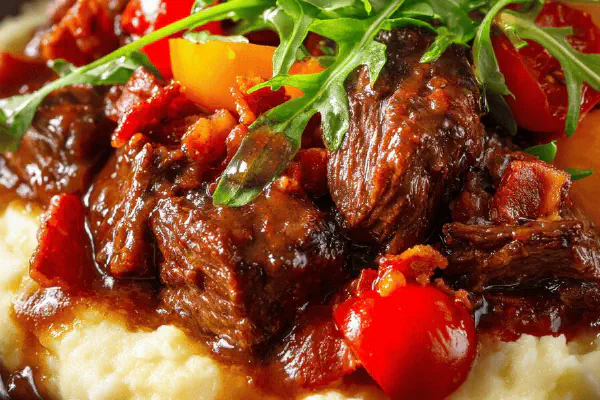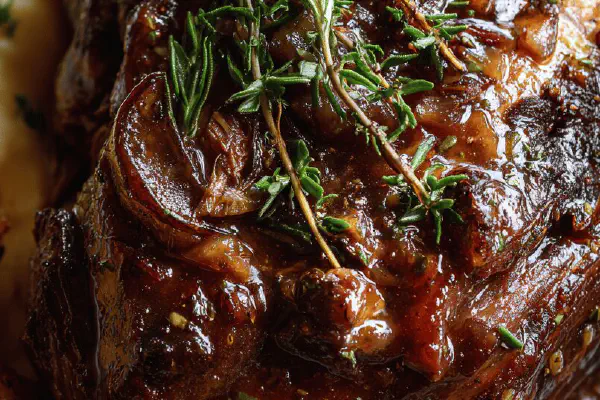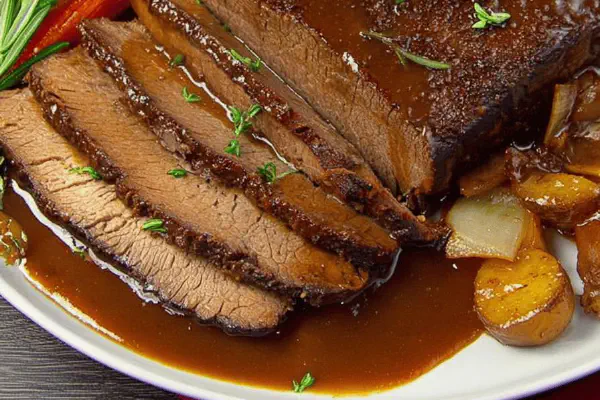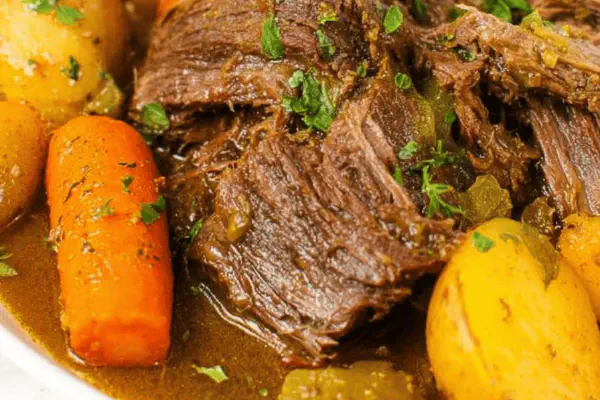Glazed Lamb Shanks with Buckwheat Honey
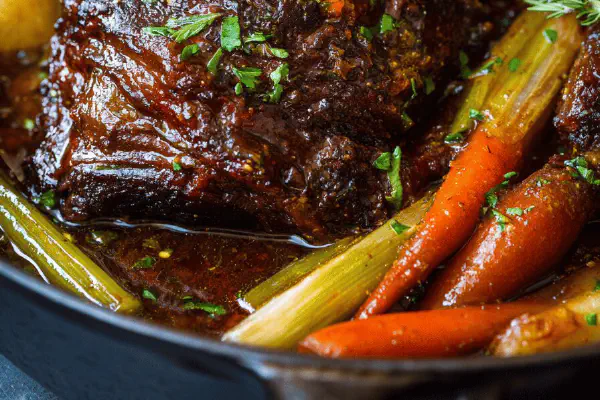
By Emma
Certified Culinary Professional
Ingredients
- 6 lamb shanks approx 400 g each
- 40 ml olive oil
- 25 g butter
- 50 ml sherry vinegar
- 30 ml cognac
- 450 ml chicken stock
- 100 ml dark buckwheat honey
- 1 blood orange sliced
- 1 large red onion halved
- 3 cloves garlic split
- 5 carrots sliced bias
- 3 celery stalks sliced bias
- 3 parsnips sliced bias
- 2 thyme sprigs
- 1 bay leaf
- Salt and freshly ground black pepper
About the ingredients
Method
- Set oven rack mid-level and preheat to 175 C
- Heat oil and butter in large skillet; sear lamb shanks until well browned all sides, season with salt and pepper, transfer to plate
- Pour vinegar and cognac into skillet, scrape browned bits, reduce liquid by half on medium heat
- Add chicken stock and honey, bring to simmer, season lightly
- Return shanks, add orange slices, onion halves, garlic cloves, cover skillet with lid or foil
- Bake in oven 1 hour, baste meat with cooking liquid every 20 minutes
- Remove skillet, nestle carrots, celery, parsnips around shanks into liquid
- Add thyme and bay leaf, return to oven uncovered
- Cook 50 minutes more until glaze thickens and veggies soften, basting occasionally
- Cover again, cook extra 30 minutes or until meat is falling from bone
- Rest briefly before serving
Cooking tips
Chef's notes
- 💡 Sear lamb shanks in combo olive oil and butter for richer brown crust. Butter adds flavor, oil raises smoke point, prevents burning. Don’t overcrowd pan or moisture traps, so sear in batches if needed. Proper browning adds depth to final sauce. After browning, rest meat on plate to keep crust intact while deglazing.
- 💡 Deglaze pan with sherry vinegar and cognac. Sherry vinegar sharper than typical red wine vinegar, but less harsh. Cognac adds fruity notes. Scrape bits off bottom to build base fond flavor. Reduce liquid by half for concentration. Avoid boiling aggressively; medium heat retains aromatics and prevents bitterness.
- 💡 Add honey and chicken stock after deglazing. Buckwheat honey dark and intense, slightly bitter, balances sweet root veggies and savory lamb. Adjust stock type if preferred: vegetable stock softens overall flavor profile. Simmer gently for infused sauce, season lightly — salt can be tweaked after long cook, not too early or meat toughens.
- 💡 Root vegetables added halfway keep texture intact. Carrots, celery, parsnips sliced bias for quicker, even cooking but still firm edges. Adding them only after initial hour prevents mush. Nestle vegetables close to meat so absorb some braising liquid and partial caramelization on edges during uncovered cooking.
- 💡 Basting key every 20 mins early on; keeps surface moist and builds thickness in glaze through repeated coating and caramel buildup. Use spoon or brush. Cover early stage to trap steam, tenderize meat. Uncover in second stage to reduce liquid, concentrate flavors, thicken glaze. Timing critical to avoid drying or overcooking veggies.
Common questions
Can I use other cuts?
Yes but shanks best for slow cooking. Tough cuts like shoulder also work but timing varies. Quick cuts like loin no. More connective tissue equals melt-in-mouth once braised long enough.
What if no cognac?
Substitute dry brandy or skip alcohol but lose some fruity/herb notes. Use extra vinegar or a splash of apple cider vinegar for acidity. Could alter final depth slightly, but still good.
Meat dry after cooking?
Usually from overcooking on high temp or skipping basting. Low temp slow cook key plus basting keeps moist. Rest meat before serving - juices redistribute. Try cooking covered longer then uncover to thicken sauce last few mins not whole time.
How to store leftovers?
Refrigerate in airtight container up to 3 days. Sauce thickens on cooling, reheat gently in low oven or stove. Freezing safe, defrost overnight in fridge. Avoid microwave reheating as can dry meat unevenly. Add splash stock or water on reheating.
